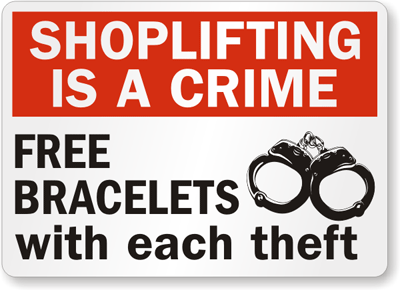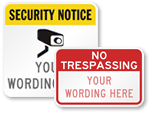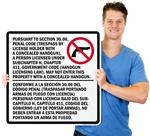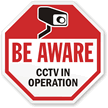Smarter ways to combat shoplifters
Shoplifters can be shrewd. We all know that purses, handbags, and large, open shopping bags are commonly used shoplifters’ devices. But there are more surprising methods too: baby strollers (sometimes built with a false bottom), closed-but-not-snapped umbrellas suspended from a shoplifter’s elbow or supported against the counter, and even bloomers.
Besides devices, shoplifters also have certain techniques to make out with their loot. Female shoplifters wearing ankle-length skirts and dresses are often seen “crotch-walking,” where they hide the chosen object between their thighs and just walk away. Shoplifters also take advantage of areas that they know have less security, like fitting rooms, which cannot legally have surveillance cameras. These are the most common places for garment shoplifting; lifters hide stolen apparel and just walk out of the store.
Different kinds of shoplifters:
According to National Association for Shoplifting Prevention, every year more than 13 billion dollars of goods are shoplifted from retailers. Statistics show that one out of eleven Americans shoplift. AccessKansas classifies shoplifters into the following categories:
- Amateurs: They don’t plan shoplifting, they just pick things on impulse.
- Kleptomaniacs: Kleptomania is a mental disorder where the person gets irresistible urges to steal merchandise.
- Juveniles: Young shoplifters often steal to impress their peers.Music, clothes, and recreational items are their favorites.
- Professionals: Astute shoplifters who plan shoplifting in advance and proceedcautiously while in the store. These professional shoplifters earn a living this way.
- Vagrants: Many homeless people shoplift food, alcoholic beverages, tobacco, and clothing.
Let’s deal with shoplifting intelligently
Depending on the resources you have, there are several things you can do to prevent shoplifting. Shoplifters have certain habits that give them away. Frequenting washrooms, leaving the store hastily, picking and putting down a variety of articles and pretending to be confused are some things to watch out for.
When you have a fairly large sales force, you can instruct them to look out for customers with extra pockets and hooks sewn into their coats and jackets. However, you should be cautious while screening potential shoplifters. If you accuse an honest customer of stealing, you harm the reputation of the store and develop mistrust among loyal and potential customers.

View this sign here.
One method of dealing with shoplifters is by deterrence. Install signs that advertise your security system. Some options are: “You are being Videotaped”, or “XX Shoplifters Prosecuted This Year. Are you next?” These signs can discourage thieves, even if you don’t have a video camera or prosecution policy in place.
Make sure sensitive areas are defended against theft. Fortify the following areas with these tips and tricks:
Sales Floor:
- Minimize blind spots. Make sure your employees are able to scan the nooks and corners of your shopping floor.
- Install a large convex mirror. This helps you see multiple areas and aisles at once. Alternate the direction of hangers to deter garment theft from racks that are close to the exits.
Fitting Rooms:
- Limit the access to fitting rooms and count the merchandise going in and coming out.
- Consider giving a pre-numbered tag that corresponds to the number of items a person carries into the fitting room.
- Fitting rooms should not have hidden areas, which can be used to discard labels and price tags.
Merchandise:
- Electronic Article Surveillance (EAS) is gaining popularity among store owners. EAS works by affixing a small “tag” to the merchandise that is either removed or deactivated when the item is purchased. The tag-and-alarm technology helps identify shoplifters by triggering an alarm as they pass through a gated sensor area.
- Those who cannot afford the expensive EAS technology for their stores should consider buying some recycled EAS tags. Even veteran shoplifters can be fooled with fake EAS tags.
- Small merchandise like watches andrings are easy-targets for shoplifters. Keep them behind the counter or lock them in a display case.
- While showing merchandise that comes in pairs like shoes, show only one part.
- Hide the EAS tag on an internal page of books and magazines. [Image by Alex Dawson]
Camera Surveillance:
- CCTVs are a powerful shoplifting deterrent. However, just like EAS, CCTVs are expensive and many small storeowners can’t afford to implement them. One option for storekeepers on a budget is installing only the dome housings (that are used to mount CCTV cameras) without actually placing a camera in them. Install several such housings in the ceiling around your store to keep shoplifters guessing which ones actually have a camera.

View this sign here.
Prosecution:
Studies by NASP point out that in only 50% cases the shoplifters are turned over to the police. Repeated shoplifting can be curbed only by prosecuting. Call the police even if you catch a juvenile shoplifter so that he or she never attempts it again.
A Chinese supermarket in New York has a unique form of deterrence: shaming shoplifters publically. The store photographs shoplifters holding the items they were trying to get away with and displays them on a “wall-of-shame.” Another grocer in Brooklyn posts pictures of alleged shoplifters on the store’s website. Signs advertise their method with this statement: “If you are caught on camera stealing your picture will be posted on our Hall of Shame.”
As the saying goes, an ounce of prevention is worth a pound of cure. Prepare your store and staff with these smart and simple solutions to shoplifting.
Category: Property, Surveillance


















